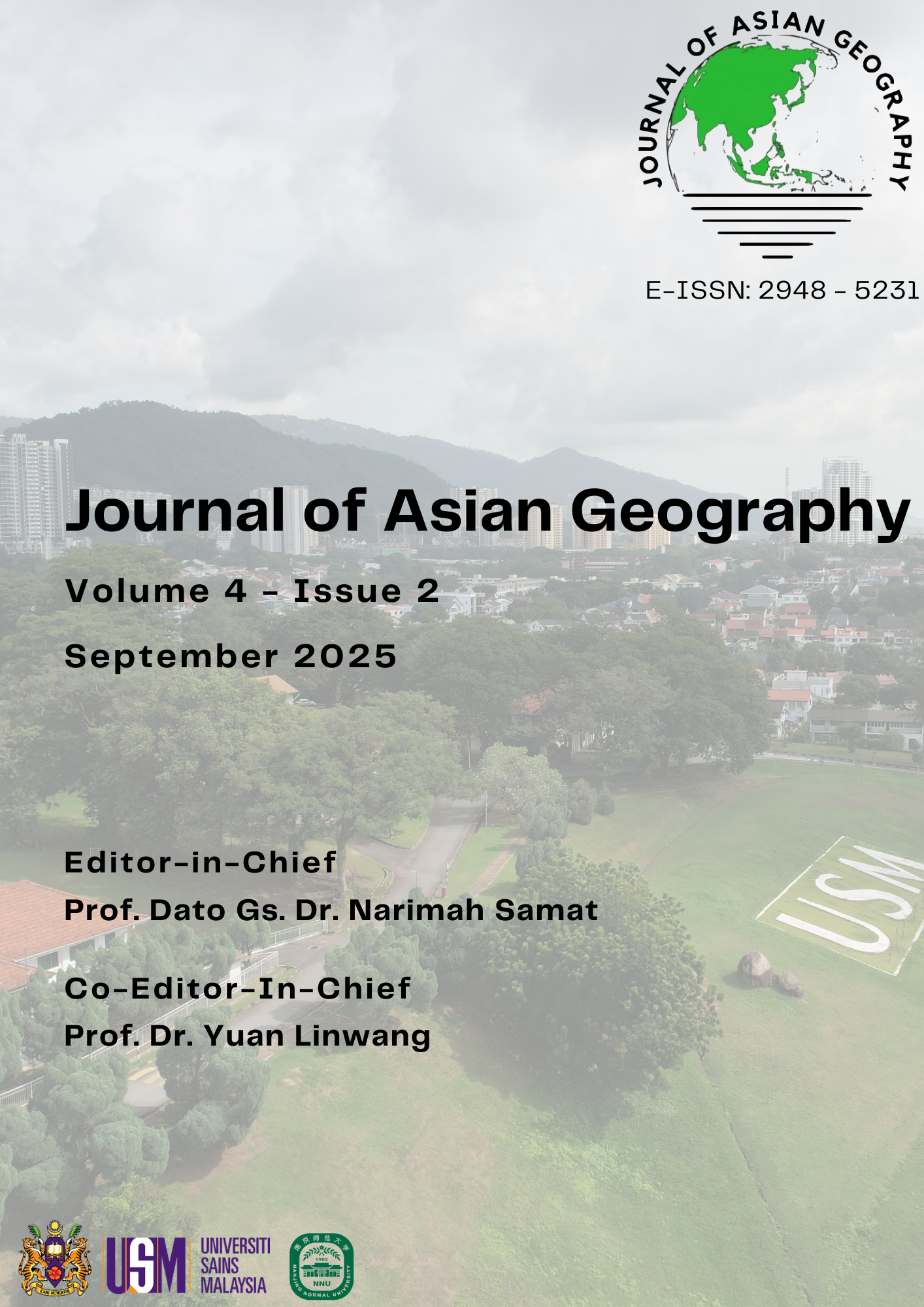Satellite-Based Drought Monitoring Using Drought Indices in Salt Lake Meighan, Iran
DOI:
https://doi.org/10.36777/jag2025.4.2.6Keywords:
GPM, ERA5-Land, Drought Indices, Time-series Analysis, Mann-Kendall TestAbstract
Drought poses a significant threat to semi-arid regions such as Iran's Meighan Wetland, where limited ground-based data hinders effective monitoring and water resource management. This study addresses the challenge of assessing meteorological drought in data-scarce environments by integrating satellite-derived and reanalysis datasets with ground observations. The objective is to evaluate the spatiotemporal dynamics of drought in the Meighan Wetland from 1998 to 2025 using the Standardized Precipitation Index (SPI) and the Standardized Precipitation Evapotranspiration Index (SPEI) at 3-, 6-, and 12-month timescales. Monthly precipitation data from the GPM Final Run Version 7 and temperature data from the ERA5-Land product were validated against 10 synoptic stations, with six selected for detailed analysis due to their high accuracy (R > 0.9 for GPM, R² > 0.98 for ERA5-Land). Results identified major drought episodes in 2000, 2008, 2017, and 2021, with SPEI indicating greater severity due to rising evapotranspiration. Correlation between SPI and SPEI was strong (R > 0.87), particularly at longer timescales. Trend analysis using the Mann–Kendall test and Sen’s slope estimator revealed significant drying trends in Arak during late winter and summer. This study demonstrates the efficacy of combining satellite and reanalysis data for robust drought monitoring, offering critical insights for adaptive water resource planning in semi-arid regions.
Downloads
Published
Issue
Section
License
Copyright (c) 2025 Journal of Asian Geography

This work is licensed under a Creative Commons Attribution 4.0 International License.


